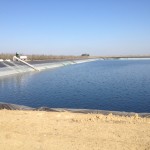There are always a lot of questions regarding California’s water Policy. These usually stem from the way water rights were established and the complication of Federal, State, Municipal, and Local water projects. Furthermore, there is no “one size fits all” policy.
There are a lot of good resources covering the subject of CA’s water rights. The Public Policy Institute of California has a lot of good resources that explain water policy. Most of these have contributions from University researchers. A good, more “reader-friendly” resource is “Cadillac Desert” a book written in 1986 by author Marc Reisner, and more recently and briefly, a recent article published by the Fresno Bee.
An important question that stems from all of this discussion is: “Why do we have water rights?” The short answer is that it is all about consistency. When in irrigated agriculture, if the source of irrigation is always in flux, decisions on when and what to plant would be harder to make. By securing these rights, it ensures that the water that was delivered in the previous year will also be delivered in future years, allowing for crop plans to be created. Farm sustainability within California would not be possible without a system of “water rights.”
Fairness of these water rights is always questioned. At the same time, however, the system is known and each parcel of land purchased either has rights to surface water or not. Land purchases made without knowing the water rights is inexcusable as we are in a land of irrigated agriculture. A re-construction of the water rights system is often discussed as being needed, but it will come at a great cost to the taxpayers and the many operations that have invested in land because of available water rights.
Recently, Australia reconfigured the water rights on the Murray-Darling River Basin. After a near decade long drought that clearly demonstrated an over-allocation of water, the Government went through the process of re-purchasing permanent water rights to maintain riparian flows. This meant farmers had the choice to sell their permanent water allocations (or sometimes not so much of a choice), while maintaining the ability to purchase non-permanent water on the open market in higher flow years. This open market approach has been beneficial to many farmers of higher value crops, but its implementation was very expensive and is still occurring. The longterm effect of this policy is unknown.
My guess is that fixing the current system within California will not be possible due to partisanship and lack of compromise within the Government and Interest Groups. It will also cost taxpayers more money than anyone can anticipate between lawsuits and land-purchases. It would be better to regulate groundwater to prevent over-drafting, forcing reliance onto ground with surface water rights, which in-turn would limit agricultural expansion, but provide some longevity to groundwater aquifers and sustainability to farming within CA. This would would look something like surface water applications in normal to wet years, with groundwater pumping during drought years.

Leave a Reply